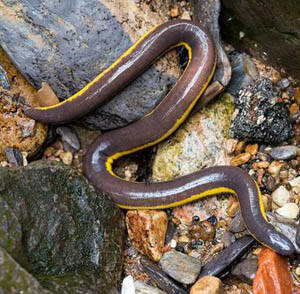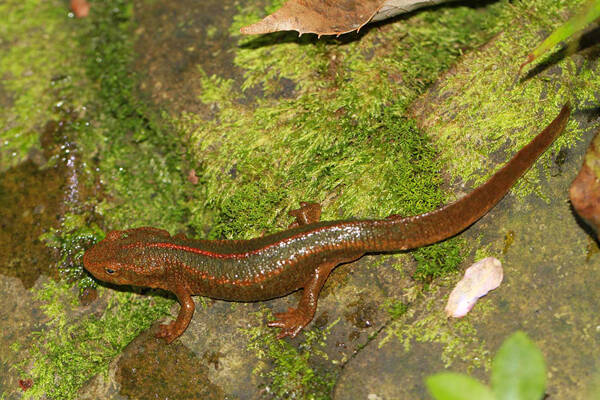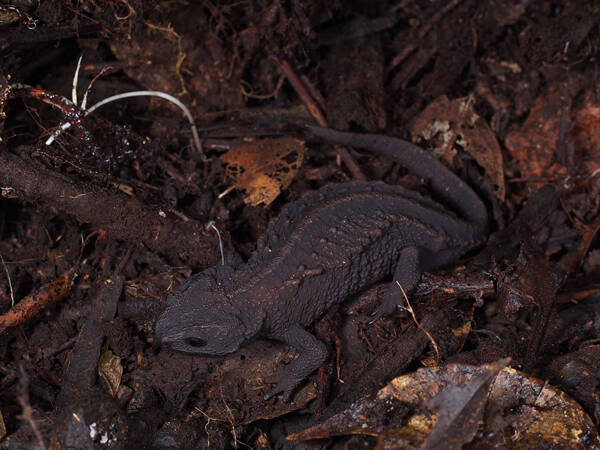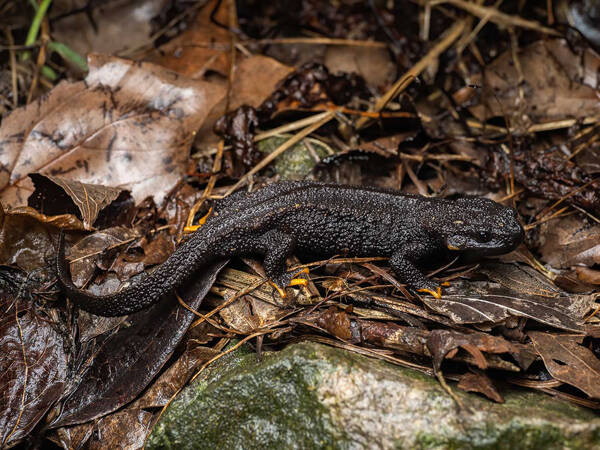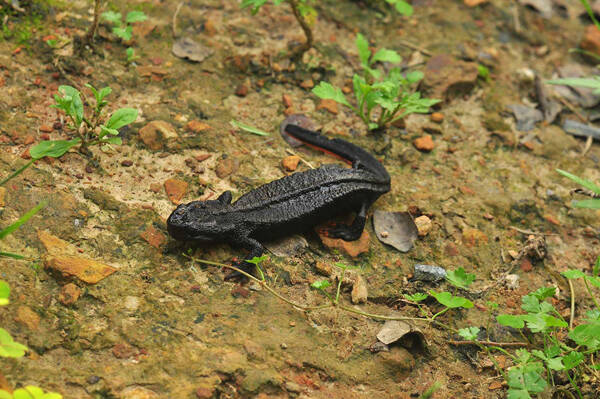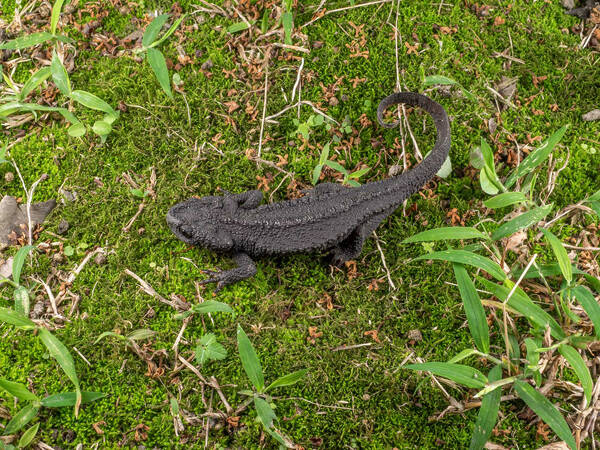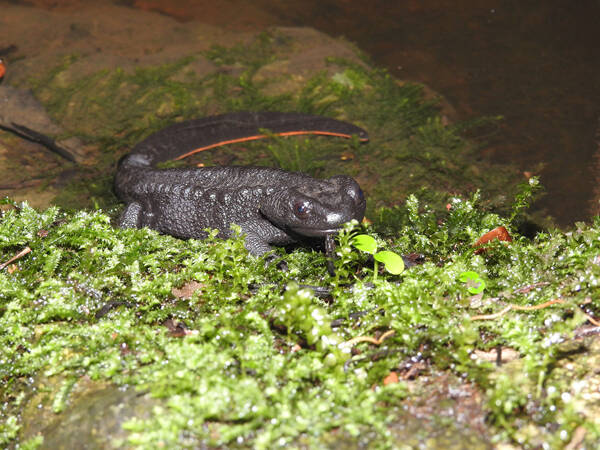Salamandrella keyserlingii
IUCN
LCBasic Information
Scientific classification
- name:Salamandrella keyserlingii
- Scientific Name:Salamandrella keyserlingii,Giant salamander, water lizard
- Outline:Urodela
- Family:Caudata Hynomialidae
Vital signs
- length:
- Weight:
- lifetime:
Feature
It is afraid of heat and light, has a slim, round and slender body, a round and flat head, smooth and soft skin, four limbs, and looks very similar to a gecko.
Distribution and Habitat
In China, it is distributed in Xinjiang (Wenquan, Yining, Huocheng, Tacheng). Abroad, it is distributed in Kazakhstan (Alatau Mountains).
It lives in mountainous grasslands at an altitude of 1800-3200m, mostly in streams or swamps formed by springs.
Appearance
The head is flat, longer than it is wide; the snout is wide and round with lip folds; there is a front collar, and the vomerine teeth are in two short rows with wide spacing, forming an "eight" shape. The trunk is cylindrical, flat dorsally and ventrally. The base of the tail is round, gradually flattened backwards; the dorsal fold of the tail is straight and slightly pointed at the end.
Details
The Xinjiang giant salamander is commonly known as the giant salamander or the water four-legged snake. It belongs to the class of amphibians, the order of caudate, the suborder of Cryptobrachiidae, and the family of Hynobiidae. It is an ancient rare animal that developed in the same era as dinosaurs, 320 million years ago. In June 1994, Professor Wang Xiuling of Xinjiang Normal University succeeded in artificially breeding the giant salamander for the first time. It is the only surviving tailed amphibian in Xinjiang. It lives in Wenquan County, Xinjiang, and only lives in high mountain springs, streams, and shallow lakes at an altitude of 2,100-3,200 meters. It is a relict animal that survived when the Tianshan Mountains and the Alato Mountains were lifted from the ground.
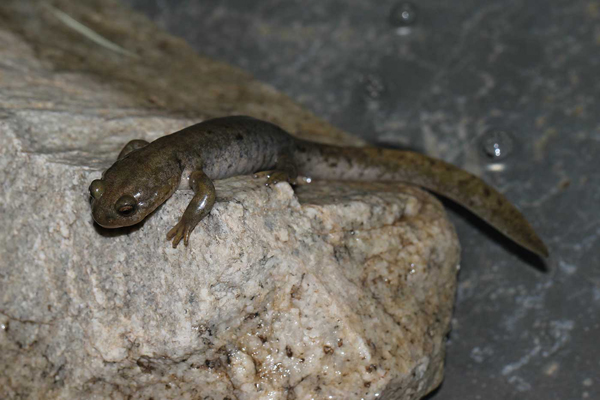
Species Discovery:
In 1866, Russian zoologist Kessel discovered an animal in Xinjiang's Alatau Mountains that was about 20 centimeters long, as thick as a finger, smooth all over, amphibious and a bit like a lizard. This was something he had never seen before, and he concluded that this was a major discovery, so he took the animal back to the laboratory and described the species.
In the next 100 years, Chinese and foreign experts have repeatedly investigated the Tianshan and Alatau Mountains in Xinjiang and Kazakhstan to try to find this mysterious animal. After repeated failures, people concluded that the animal Kessel had seen was extinct and no one would see it again.
In September 1989, a student from Wenquan County of the Department of Biology of Xinjiang Normal University brought a four-legged snake from home. Wang Xiuling, a teacher in the Department of Biology, immediately thought of the guy that the Russians had discovered 100 years ago but no one had ever seen. The next day, she and several colleagues went straight to Wenquan County. On September 6, 1989, it had been 123 years since Kessel last saw this animal. In 1990, the second habitat of the northern salamander was discovered. With Wang Xiuling's unremitting efforts, on December 29, 1997, the autonomous region approved the establishment of an autonomous region-level northern salamander protection area. She also became the only scholar in China to conduct field research and cultivation of northern salamanders, so people figuratively called her "the mother of northern salamanders". She won the regional individual award of the 2001 Earth Award Education Group.
The Xinjiang giant salamander plays an irreplaceable role in the study of vertebrate system evolution, and has important academic research value in the classification and system evolution of the Hynantheidae family. Therefore, it is an extremely precious "living fossil". The habitat of the Xinjiang giant salamander is extremely narrow. It only lives in the Alato Mountain and the local spring area of Tianshan Mountain in the west of Wenquan County, Xinjiang, bordering Kazakhstan. The central area is about 500 square kilometers. The number is rare. There are about 3,500 to 4,000 in the two habitats of Jiemaikegou and Sulubiezhen. As an endangered animal, the Xinjiang giant salamander has long been listed in the Red List of the International Union for Conservation of Nature and Natural Resources (IYCN) and the Red List of the former Soviet Union. In 1998, the Xinjiang giant salamander was listed in the Red List of Endangered Animals in China, with an endangered level of "critically endangered", becoming a precious germplasm resource in China and has been listed in the ranks of China's first-class protected animals.
The ancestors of Xinjiang's northern salamander lived 240 million years ago, in the same era as the dinosaurs and pterosaurs of the Jurassic period. Later, due to the rise of the earth's crust and the drying up of the lake, they were squeezed into the strata and became fossils of ancient organisms that have been extinct in history. What is rare is that some of the salamanders have survived, and they are in the Tacheng and Wenquan counties of Xinjiang. However, with the change of living environment, the Xinjiang salamander is much smaller than its ancestors.
The salamanders 400 million years ago were as large as more than 40 cm, while the modern northern salamanders are no more than 10 cm. Xinjiang's northern salamander belongs to the Amphibian class, Caudata, Microhylidae, and is only 6-8 cm long and weighs several grams. It has a slender, round and elongated body, a round and flat head, smooth and soft skin, and four limbs. It looks very similar to a four-legged snake, but its limbs are short and weak, and it can hardly support its body, so it lives in the water most of the time.
Although it is short and small, its organs are more complete than those of ordinary fish. It has lungs in its chest cavity and can breathe on land. It is an amphibian. The amazing thing is that its skin is also its breathing organ, which is very beneficial for it to hide in the water for a long time.
In the Sulubiezhen Mountain in Wenquan County, the living environment of the northern salamander is also very limited. There are only 20 hectares of streams and spring swamps where they can be found. They live under stones or in caves in the water. Occasionally, when they crawl onto the shore, they push their bodies with their hind legs, shake their heads and tails and crawl slowly. Because their tender and smooth bodies are afraid of drying, they will soon return to the water.
In the water, the body of the northern salamander is much more flexible. At this time, their wide tail becomes the power of swimming. In order to reduce resistance, their limbs are tightly tucked at the side of the body, and the swimming speed is much faster than on the shore.
The salamander may be mistaken for a viviparous animal. In fact, its reproduction still depends on laying eggs. It has no copulation organs and its mating and reproduction habits are basically the same as those of frogs. The hatched larvae are tadpoles and have external gills, but they are more advanced than tadpoles and have balance limbs to facilitate balance. The main food of Xinjiang northern salamander is aquatic insects, worms, eggs and aquatic plants. Because of its small size and slow movement, it cannot catch large food. Because of its poor self-defense ability, it hides in the cracks of rocks during the day and comes out at night.
Xinjiang's northern salamander and Shaanxi's northern salamander belong to the same family and species. However, due to different geographical environments, the salamanders living in the northern temperate zone are larger, while the salamanders living in freshwater in high-altitude mountainous areas are much smaller. The discovery and research of Xinjiang's northern salamanders are recent years. Originally, local herdsmen had no idea what they were and called them "lizards living in the water."
Xinjiang's northern salamander is the only remnant of the Caudata in Xinjiang, and its number is very rare. According to relevant information, the total number is about 3,000. Because it has neither edible value nor medicinal value, it has not received "attention" from humans. However, as an endangered species, humans still need to protect and care for them, so that this "fossil" fish can live in the same global village with humans forever.
The muscle protein content of Xinjiang North Salamander is 19.08%, with 17 kinds of amino acids and 6 kinds of inorganic elements such as Ca.
It is listed in the second level of "List of National Key Protected Wildlife in China".


